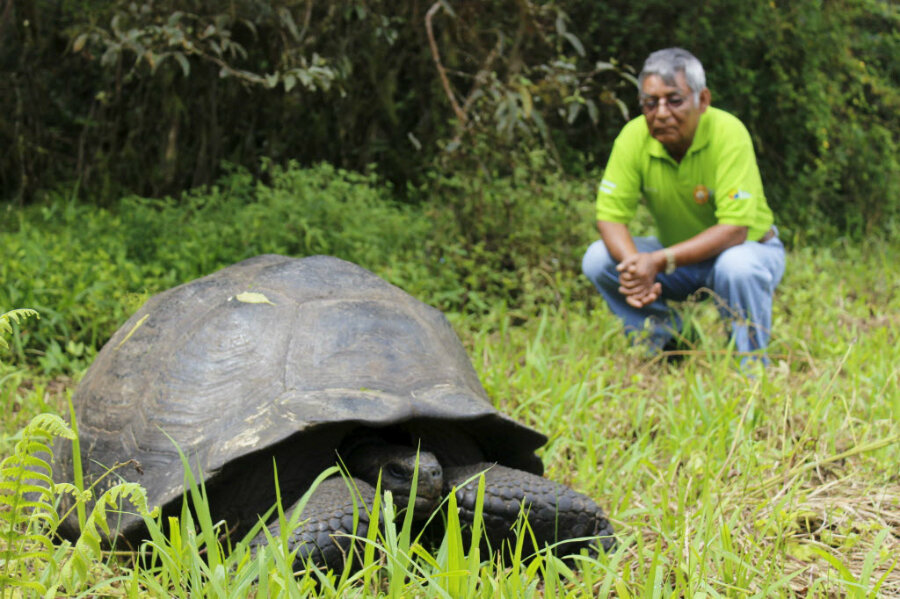Lonesome George returns? How to bring back extinct Galápagos tortoise species
Loading...
An extinct Galápagos tortoise species may get a new lease on life.
The last of the Pinta tortoises died in 2012. But with the discovery of a close relative of the species, some scientists say they may be able to use genetics to bring it back.
The only living Pinta, known as "Lonesome George," was found in the Galápagos Islands in the early 1970s and died in captivity at 102 years of age. Many unsuccessful breeding attempts ensued.
But in 2008, a close relative of George was found on another of the Galápagos Islands with DNA that closely matches the Pinta. Scientists plan to breed the tortoises in captivity in an attempt to genetically match the now-extinct Pinta.
The new species of giant tortoise was found on Santa Cruz Island off the coast of Ecuador when scientists, using blood samples and genetic analysis, discovered a distinct high-elevation tortoise named Chelonoidis donfaustoi.
C. donfaustoi, as its known, is the first new species to be discovered in the Galápagos in more than a century and the 15th tortoise species found on the islands.
Scientists suggest the tortoises first came to the Galápagos somewhere between two to three million years ago, possibly arriving on floating vegetation and able to survive on non-native plants, according to one study. Up to 25,000 tortoises live on the Galápagos Islands now.
The number of tortoises on the Galápagos fell drastically since the 1500s, from roughly 250,000 to 3,000 during the 1970s, The New York Times reports.
The new tortoise discovery came unexpectedly in 2008, when scientists gathered blood samples from 1,600 tortoises living at higher elevations, according to The New York Times.
Nearly 90 percent of the animals were found to have DNA closely matching George’s species, indicating that the species might not have been extinct with 17 showing the “high levels of Pinta DNA.”
With the help of geneticists, it may be feasible to create tortoises with 95 percent of the Pinta, Adalgisa Caccone, a researcher at Yale University, told the Times. “The size of this population is mind-boggling,” Caccone said. “I am optimistic that some of these animals will have high conservation value.”
Scientists will now examine DNA from each animal to pinpoint the nearest equivalent to the Pinta before breeding programs commence during the next year.
Dr. Linda Cayot, of the Galápagos Conservancy, indicated genetics may not only help resurrect the Pinta tortoise, but may have more far-reaching environmental outcomes, including conservation.
Tourism and overcrowding on the Gálapagos Islands, known for inspiring Charles Darwin’s theory of evolution and its unique species, have threatened the archipelago in recent years causing the United Nations Educational, Scientific, and Cultural Organization to place the Galápagos on its list of endangered World Heritage Sites.
If the breeding program is successful, more native tortoises could balance the islands’ ecology. Cayot said the animal helps disperse seeds and nutrients throughout the atolls.





